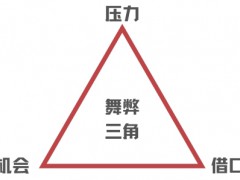據(jù)油價(jià)網(wǎng)7月13日消息:根據(jù)能源信息署(EIA)的數(shù)據(jù),8月美國(guó)頁(yè)巖油產(chǎn)量將小幅增加4.2萬(wàn)桶/天。
EIA在其最新的鉆井產(chǎn)能報(bào)告中預(yù)測(cè),幾乎所有增加的產(chǎn)量都將來(lái)自二疊紀(jì)盆地,達(dá)到5.2萬(wàn)桶/天。阿巴拉契亞盆地的產(chǎn)量也將增加2000桶/天。與此同時(shí),除Haynesville外,其余頁(yè)巖區(qū)塊的產(chǎn)量將下降1.3萬(wàn)桶/天。海恩斯維爾的產(chǎn)量本月仍將持平。
這一溫和的預(yù)測(cè)增長(zhǎng)將推動(dòng)美國(guó)8月份頁(yè)巖油總產(chǎn)量達(dá)到790萬(wàn)桶/天,與大流行前美國(guó)頁(yè)巖盆地的產(chǎn)量仍有很大差距,因?yàn)轫?yè)巖鉆探商對(duì)油價(jià)的突然波動(dòng)仍持謹(jǐn)慎態(tài)度。
然而,這種謹(jǐn)慎態(tài)度對(duì)一些頁(yè)巖生產(chǎn)商開了個(gè)壞玩笑。這些公司在油價(jià)開始回升后不久就對(duì)沖了2021年的產(chǎn)量,最終因?yàn)閷?duì)沖太早而虧損。許多人沒(méi)有對(duì)沖,但那些進(jìn)行對(duì)沖的人現(xiàn)在沒(méi)有動(dòng)力提高產(chǎn)量,因?yàn)檫@意味著在他們過(guò)早的對(duì)沖中損失更多的錢。
據(jù)Rystad Energy稱,美國(guó)頁(yè)巖油產(chǎn)量恢復(fù)緩慢還有另一個(gè)純粹的技術(shù)原因。該能源咨詢公司表示,目前大多數(shù)美國(guó)頁(yè)巖生產(chǎn)商都在提高已鉆但尚未完工的油井產(chǎn)量。為了更有效地提高產(chǎn)量,他們需要鉆更多的新井。
Rystad頁(yè)巖研究主管Artem Abramov表示:“即使美國(guó)頁(yè)巖行業(yè)希望增產(chǎn),從價(jià)格信號(hào)到重大產(chǎn)量影響所需的時(shí)間至少是9個(gè)月,包括作出投資決定所需的時(shí)間,從開鉆到壓裂結(jié)束所需的時(shí)間,再加上從壓裂結(jié)束到產(chǎn)量峰值的最后階段。”
馮娟 摘譯自 油價(jià)網(wǎng)
原文如下:
Permian To Drive U.S. Shale Production Increase In August
U.S. shale oil production will increase by a modest 42,000 bpd in August, according to the Energy Information Administration.
In its latest Drilling Productivity Report, the EIA forecast that almost all of this production increase will come from the Permian, at 52,000 bpd. Production in the Appalachia Basin will also increase, by 2,000 bpd. At the same time, the EIA said, production across the rest of the shale plays, excluding Haynesville, will decline by a combined 13,000 bpd. Production at Haynesville will remain flat on the month.
This modest forecast increase would push total U.S. shale oil output to 7.9 million bpd in August, still a far cry from what the U.S. shale basins were producing before the pandemic as shale drillers remain cautious of sudden price swings in the price of oil.
This cautiousness played a bad joke on some shale producers, however. These companies hedged their 2021 production soon after oil prices began recovering, eventually losing money because they hedged too early. Many did not hedge, but those who did now have less motivation to boost production as this would effectively mean losing more money on their premature hedges.
According to Rystad Energy, there is also another purely technical reason why U.S. shale oil production is slow to come back. Currently, the energy consultancy said, most U.S. shale producers are boosting production from drilled but uncompleted wells. For a more meaningful ramp-up of production, they would need to drill more new wells.
“Even if the US shale industry wanted to produce more, the time required from a price signal to a significant production impact is at least nine months, including the time it takes to make an investment decision, the months needed from spud to frac end, plus the last stage from frac end to peak production,” said Artem Abramov, Rystad’s head of shale research.
免責(zé)聲明:本網(wǎng)轉(zhuǎn)載自其它媒體的文章,目的在于弘揚(yáng)石化精神,傳遞更多石化信息,并不代表本網(wǎng)贊同其觀點(diǎn)和對(duì)其真實(shí)性負(fù)責(zé),在此我們謹(jǐn)向原作者和原媒體致以敬意。如果您認(rèn)為本站文章侵犯了您的版權(quán),請(qǐng)與我們聯(lián)系,我們將第一時(shí)間刪除。







